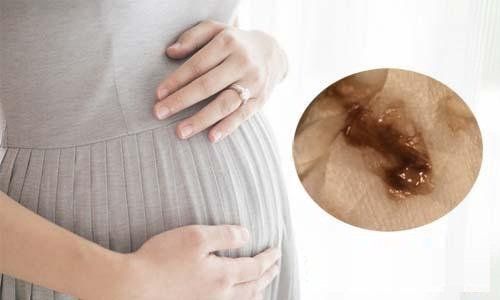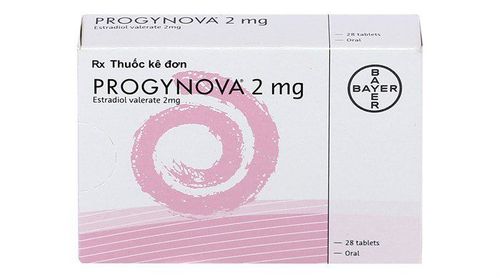This article is consulted by Master of Medicine, Dr. Nguyen Van Thanh - Obstetrician and Gynecologist - Department of Obstetrics and Gynecology - Vinmec Nha Trang International General Hospital.
Postpartum discharge is a normal phenomenon after childbirth, but it can make women feel very uncomfortable, especially when it lasts for an extended period.
1. What Is Postpartum Discharge? Postpartum discharge is a normal physiological phenomenon.
The fluid that flows from the vagina after childbirth is called postpartum discharge.
It includes blood, tissues from the uterine lining, and possibly bacteria.
The uterus contracts to close blood vessels, reducing the amount of blood flowing out after the baby is delivered.
The color of the discharge changes over a few days. The bright red color gradually decreases in the first few weeks as the flow lessens.
Postpartum discharge can last from 2-4 weeks depending on the individual's condition. This condition will disappear within 2 months.
2. How Long Does Postpartum Discharge Last?
Postpartum discharge appears immediately after childbirth, whether it is a vaginal birth or a cesarean section.
The color of the discharge changes from bright red to brownish-red within a week, then turns yellow or white around 10 days later.
Postpartum discharge usually lasts from 2-4 weeks, depending on the individual's condition.
Postpartum discharge after a cesarean section is usually less than after a vaginal birth.
In the first 3 days after childbirth, the discharge consists of thin blood and small dark clots.
From 4-8 days after childbirth, the discharge becomes thinner, with a small amount of mucus mixed in, making the blood color lighter.
By the 9th day after childbirth, the discharge is colorless, only yellowish or white.
Women who have given birth before or are breastfeeding will have a quicker end to the discharge due to faster uterine contraction.
If the woman is too active or works too hard, the discharge may reappear.

3. When Is Postpartum Discharge Abnormal?
Normal postpartum discharge does not have a foul odor, only a slight fishy smell, and usually lasts about 20 days. A small number of women may have discharge lasting 40-45 days, with a significant reduction in quantity.
The discharge changes color from bright red to gradually clear yellow.
However, many women experience abnormal postpartum discharge, especially postpartum discharge retention. Here are some abnormal signs of postpartum discharge:
- Vaginal discharge with a foul, unpleasant odor: Normal discharge does not contain pus, but when it passes through the vagina, it loses its sterile nature and may be infected by bacteria such as staphylococci, bacilli, streptococci, etc. In this case, the discharge will have a fishy smell and an alkaline pH. The discharge will have a foul odor when infected.
- Bright red discharge and as much as in the first week after childbirth.
- Prolonged discharge or dark red discharge followed by bleeding, indicating retained placenta after childbirth.
- Excessive bleeding: Even with adequate rest, if the blood flow remains heavy and bright red after 4 days of childbirth.
- Presence of many blood clots.
- When pressing on the uterine fundus, the discharge is black with a foul odor.
- When pressing on the abdomen, there is a lump inside, and the abdomen is hard.
- Irregular heartbeat.
- Mild fever or chills.
- Women feel dizzy and fatigued.
If vaginal bleeding returns 6 weeks after childbirth, and it is not excessive and not accompanied by other symptoms, it may be early menstruation. However, it is necessary to check to ensure nothing abnormal is happening.

4. Notes During Postpartum Discharge
- Avoid Using Tampons Too Early: Do not use tampons within the first 6 weeks as they may inadvertently introduce bacteria into the uterus. The best option is to use sanitary pads.
- Maintain Absolute Hygiene: Bathe and clean your body daily. Change sanitary pads frequently, every hour.
- Choose Loose Clothing: If postpartum discharge stains are not thoroughly cleaned, discard the clothing instead of reusing it.
- Watch for Abnormal Signs: Be aware of symptoms such as bleeding, abdominal pain, or fever, as these are dangerous complications. Visit medical facilities for examination.
- Delayed Discharge and Fever: If there is delayed discharge and fever, consider postpartum discharge retention.
- Monitor Your Health: Pay attention to your health condition, and if any abnormal signs are detected, visit specialized medical facilities for proper examination and treatment to avoid postnatal complications and protect your health.
Please dial HOTLINE for more information or register for an appointment HERE. Download MyVinmec app to make appointments faster and to manage your bookings easily.














